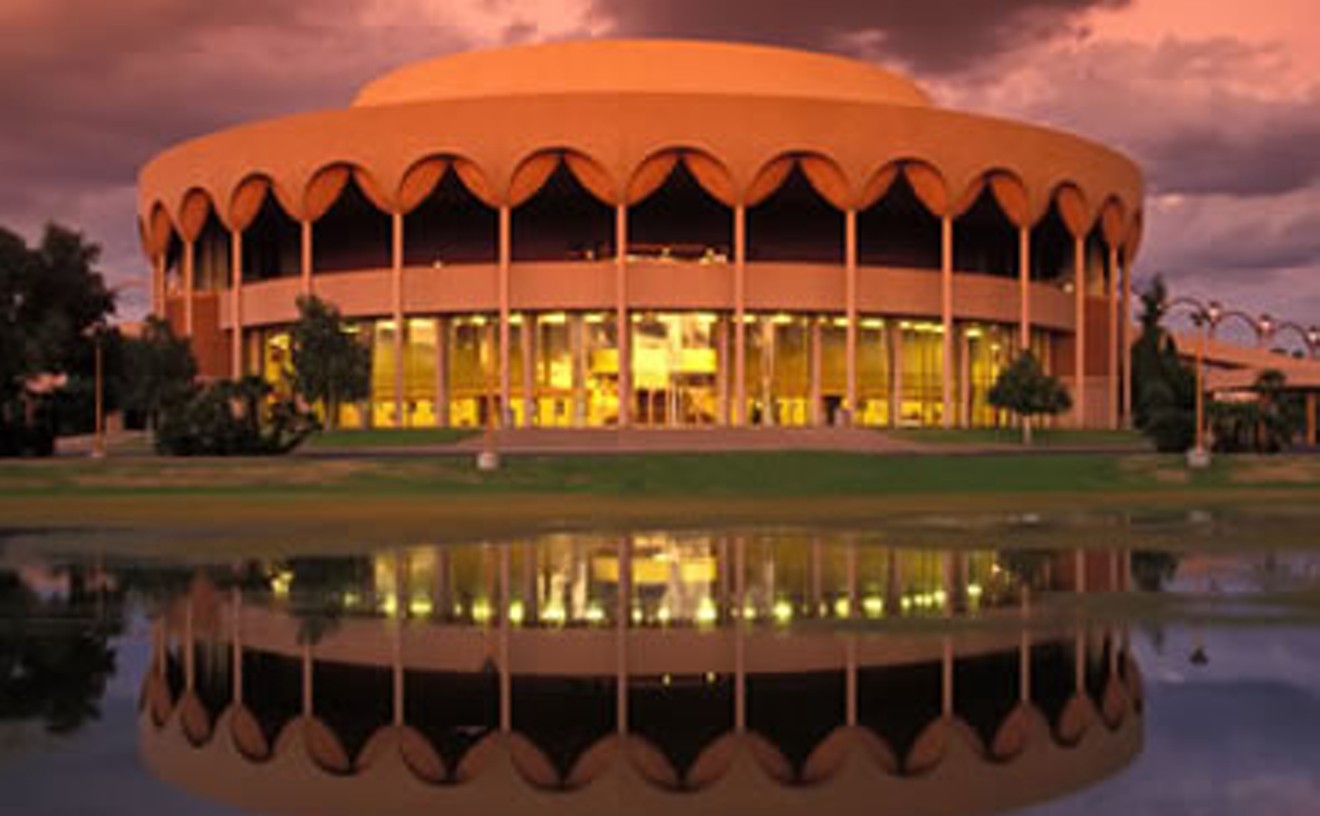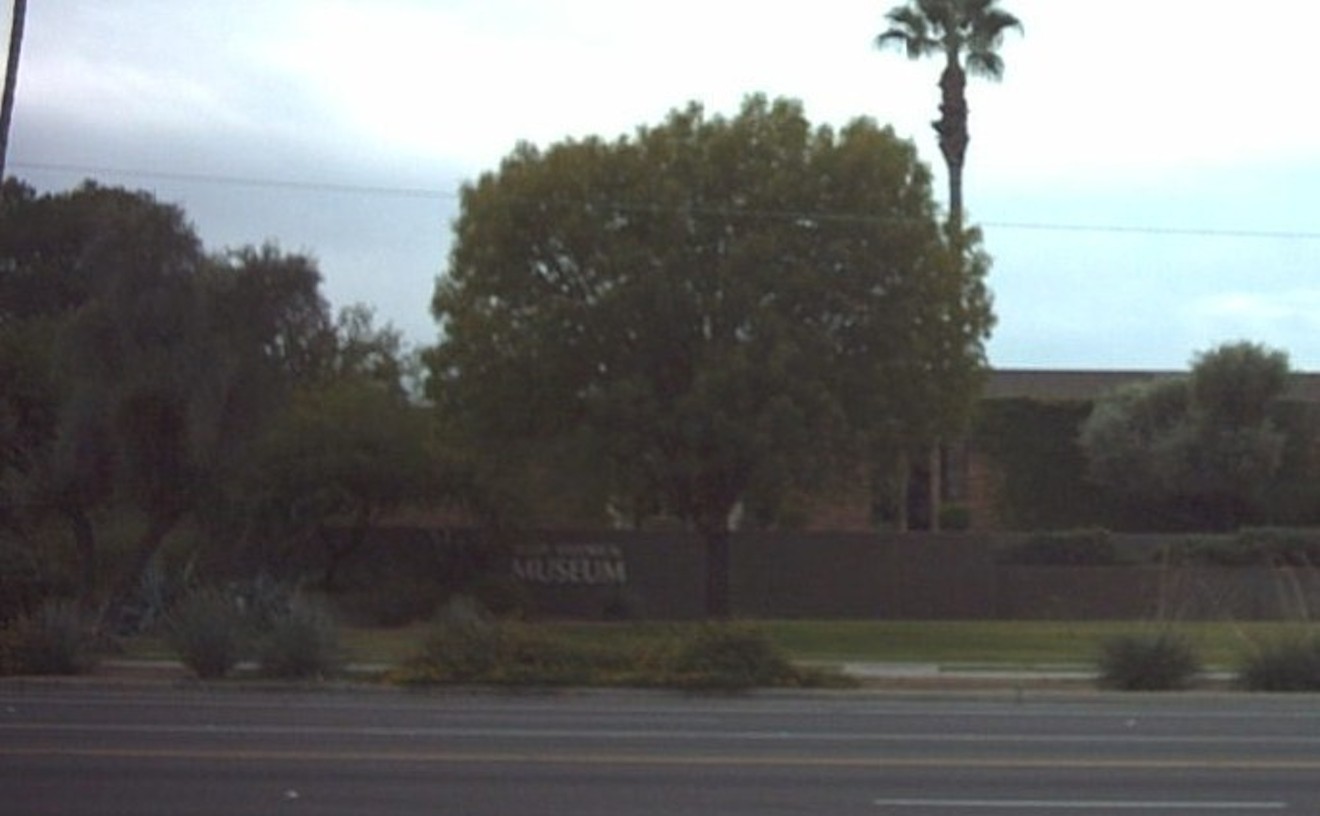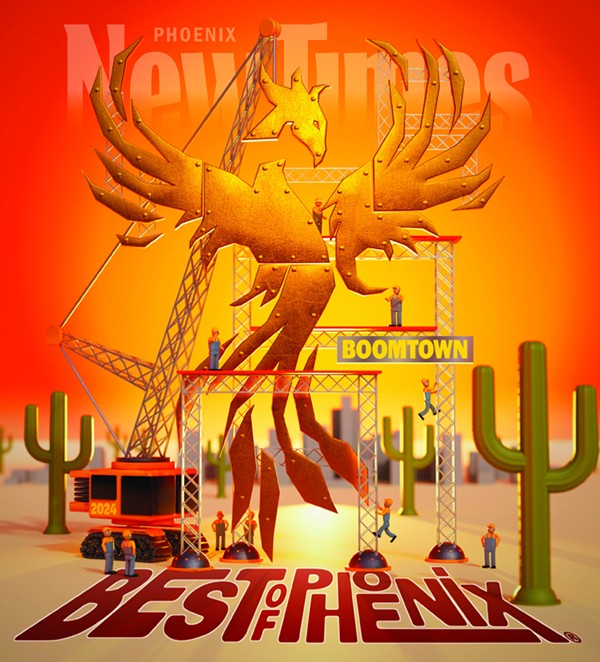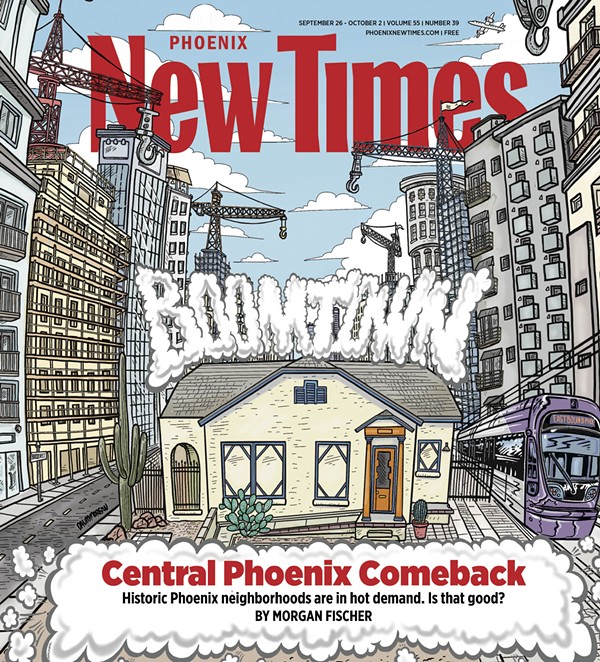The Phoenix Theatre Company's summer production of "Fiddler on the Roof" would have been stellar in any size room. But the top-notch show was more affecting in the small space, which allowed audiences to see the nuances of the performances. In quality and reputation, The Phoenix Theatre Company has grown far beyond the relatively small walls of its downtown home, but we love the intimate setting because of the sense of immediacy it gives, not to mention the excellent sound quality. Next season's lineup includes offerings like "Churchill" and "Into the Woods," so we anticipate several visits to The Phoenix Theatre Company in the coming months.
Best Large Playhouse
ASU Gammage

A big show requires a big theater. We just can't picture the "Miss Saigon" helicopter scene or the Arendelle set in "Frozen" on a small stage. So when a large production comes to town, it usually ends up at ASU Gammage, which is just fine with us. The beautiful Frank Lloyd Wright-designed building is a grand and inspiring setting for ASU Gammage's annual Broadway Across America series, which this season includes heavy hitters such as "Wicked," "Mamma Mia!" and "Some Like It Hot." The location on ASU's Tempe campus means that there are plenty of dining and drinking options within an easy walking distance. (Our recommendation: Grab a bite at Casey Moore's Oyster House before the show.)
- 1200 S. Forest Ave., Tempe, 85287 Map
- 480-965-3434
- www.asugammage.com
Best Queer Hangout
thems.
If you're looking to make friends in the LGBTQ+ community, we know just the place. Thems. hosts monthly events and workshops that encourage LGBTQ+ people in Phoenix to make friends and center art in their lives. From poetry workshops and shows to flower arranging classes and a fruity market with only queer-owned businesses, thems.' events are spurring growth in the community. The organization's biggest event is Fruity Poetry Night, in which hundreds of guests gather at a changing location (the most recent was Phoenix Art Museum) for the two-hour program, including a featured poet, queer-owned vendors and an open mic for all levels. Those looking for a more chatty event should attend Sunday Sips, where you'll be paired with a stranger at a rotating coffee shop to follow a guided sketching workshop and meet new people.
Best Writing Workshop
Ghost Poetry
Ghost Poetry Show has graced Phoenix with ambitious new talent since its debut at the now-defunct Film Bar in 2021. The show nights are a spectacle of their own, but the behind-the-scenes community is where the heart of the show gets its charm. Regulars congregate at monthly meetings at host Cylie Naylor's business, North and Co. Writers put their own prompts into a hat that are then pulled out and read aloud before a seven-minute timer is started. It's a well-nurtured community of writers who wish to connect and a great way for new voices to hone their craft without getting on a big stage.
Best New Gold Rush
Data Centers
Through the 1950s, Arizona was a haven for copper mining, which led in part to the state's growth and general development. And while copper is still very much a massive economic driver — upward of $1 billion in 2019, per reports — there's another gold rush 'round these parts: data centers. In recent years, companies like Digital Realty, Meta and Google have built massive, multi-million-dollar centers across the Valley. And how could they not: Whether it's the reasonable energy prices, the heaps of affordable land or the high-speed fiber optic networks in the Valley, there are lots of factors making us a veritable paradise for these increasingly relevant tech centers. The rush, it seems, isn't nearly over; in spring 2024, QTS Realty Trust bought 375 acres near Glendale for its third such data center. Yes, these centers are often connected with AI technology, which raises its own moral and technological concerns. But there's little denying that these centers aren't just a massive financial upside; they open up other vast opportunities for the Valley to further emerge as a tech hot spot.
Best One-Way Ticket to the Afterlife
Seventh Street/Seventh Avenue Suicide Lanes
To the extent that our system of roadways operates smoothly, it's by a collective adherence to the rules. When the light turns red, we stop. When two lanes merge into one, we zipper. When we enter a traffic circle, we ... do our honest best. But those good manners go out the window during rush hour on Seventh Avenue and Seventh Street. That's when the center lanes change orientation — southbound-only on weekday mornings, northbound-only in the late afternoons. Copious signage communicates as much, if only drivers would notice. Every single day, riding in the suicide lane means coming grill-to-grill with someone barreling down it in the wrong direction. You'll yell, you'll gesture, you'll do everything short of write "YOU CAN'T TURN HERE" on your windshield. None of it will matter. Just be grateful you got home alive.
Best Glimpse of a Robot-Controlled Future
Waymo Driverless Taxis
You've seen them, even if you haven't been bold enough to ride in one. They cruise through Valley streets and neighborhoods — and recently, the highways — cameras a-whirring, empty and unnervingly silent. Sometimes they turn from the wrong lane, run into a pole or even get pulled over. Mostly, though, they roll around town ferrying passengers to and fro while the driver's seat sits unoccupied. Pulling up next to one at a stop light is to gaze into a singularity, a disturbing peek at a sterile and post-human existence. Kids might call them "magic cars," and we might call them creepy as hell, but they're probably not going away. Like WALL-E, they'll amble along our desiccated roadways long after civilization has ended.
Best Guardians of Local History
Tempe History Museum

There's much more to Tempe history than just Legend City, Hayden Flour Mill and Monti's La Casa Vieja. (Remember Greasy Tony's? How about Incredible Universe?) The East Valley suburb has a rich heritage dating back to the late 1800s filled with stories of Indigenous peoples, early settlers, cultural landmarks and the growth of a vibrant community. The Tempe History Museum's staff work hard to catalog and showcase as much of the city's past as possible, preserving its legacy for future generations. Its 8,000-square-foot space offers exhibit areas, galleries and themed sections, such as "College Town" and "Surviving in the Desert." What sets Tempe History Museum apart from other local historical institutions are its engaging and fun exhibitions. In 2014, it presented "The Tempe Sound," a rip-roaring collection of nostalgic photos and artifacts of the city's music history with a focus on Mill Avenue's late '80s/early '90s jangle-pop heyday. Other standout exhibits include 2021's game-themed "Video Invaders" and last year's fascinating and evocative "Guadalupe: Where Three Cultures Flourish." The museum also offers a robust online archive (emuseum.tempe.gov) containing countless photos of Tempe bars, restaurants, businesses and institutions that have long since become distant memories.
- 809 E. Southern Ave., Tempe, 85282 Map
- 480-350-5100
- www.tempe.gov/museum/
Best Discovery
John Milton's Handwritten Notes
Of all the places one expects to find a rare example of 17th-century poet John Milton's handwritten reading notes, a downtown Phoenix library is not on the list. And yet that's exactly what happened earlier this year. Visiting scholars who were examining books in the Burton Barr Central Library's Rare Book Room came across what they thought were notations by Milton in a 1587 history tome. After an expert at the University of Cambridge authenticated the find, Burton Barr could now call itself the owner of only one of three English-language books containing Milton's handwriting. The visiting scholars had been brought to the Valley by the Arizona Book History Group, an organization founded by ASU professors Brandi Adams and Jonathan Hope to inspire new ways to do literary research. "We don't get time to kind of meander with a book," Adams said in an ASU News article. "So we decided that this would be a good way to think about how do we kind of break some of those structures and work in community and conversation." Mission accomplished.
Best Revitalization
The Abbey on Monroe
The story of The Abbey on Monroe begins in 1883, when Phoenix First Baptist Church was founded. The congregation's first building began construction in 1903 and was replaced by the current structure in 1930. The congregation left the building for digs uptown in 1968, but in 1984, the structure, which by then had been added to the National Register of Historic Places, succumbed to a fire that caused hundreds of thousands of dollars in damage, including destroying the ceiling of the sanctuary. Enter former Phoenix mayor and Arizona attorney general Terry Goddard, who helped a nonprofit legal client, Housing Opportunity Center, purchase the building in 1993, right before it was due to be demolished. Over the next 30 years, some low-income housing was built on the property, but the gorgeous ruin of the church lay empty. But now, 40 years after the fire, the building has reopened and has a second chance at life, and has been renamed The Abbey on Monroe. It's a wedding and event venue, and Walter Productions co-owner Kirk Strawn and concert promoter Danny Zelisko are in talks to bring concerts and other forms of entertainment to the space. Future plans include a restaurant as well. It's a happy ending for one of the most beautiful buildings in Phoenix.
- 302 W. Monroe St., Phoenix, 85003 Map
- abbeyonmonroe.com/





